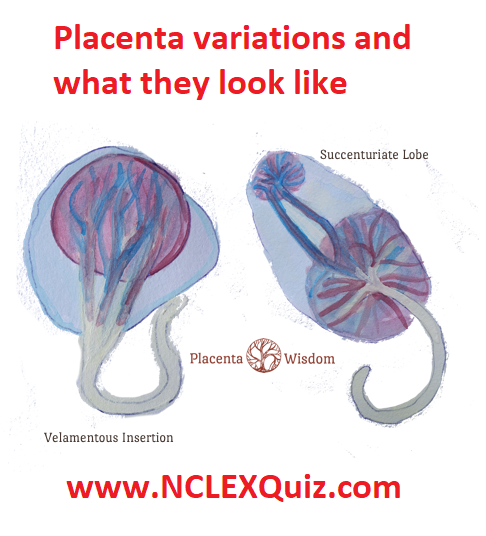Placenta variations: Succenturiate Lobe and Velamentous
Velamentous Insertion: This is when some of the umbilical vessels run through the membranes (rather than attaching directly into the placenta). Although most babies are born fine, this kind of placenta does come with more risks. Because the vessels are unprotected, if the membranes (the bag of waters) is broken, it can puncture the vessels and cause hemorrhaging. Luckily, all the placenta’s that I have seen with this variation have all had happy endings.
Succenturiate Lobe: This is an extra lobe that is embedded in the membranes and connected to the main disc of the placenta via arteries/veins. According to radiopaedia.org this occurs in around 2/1000 pregnancies. It’s not really known what causes these accessory lobes. One theory put forth by babyworld.co.uk is that a slight irregularity or tiny scar on the uterine wall makes a small area inhospitable to the growing placenta, forcing a lobe to ‘move over’ and grow elsewhere. Some lobes are attached directly to the placenta via a ‘parenchymal bridge’, this is called a digitate lobe.
